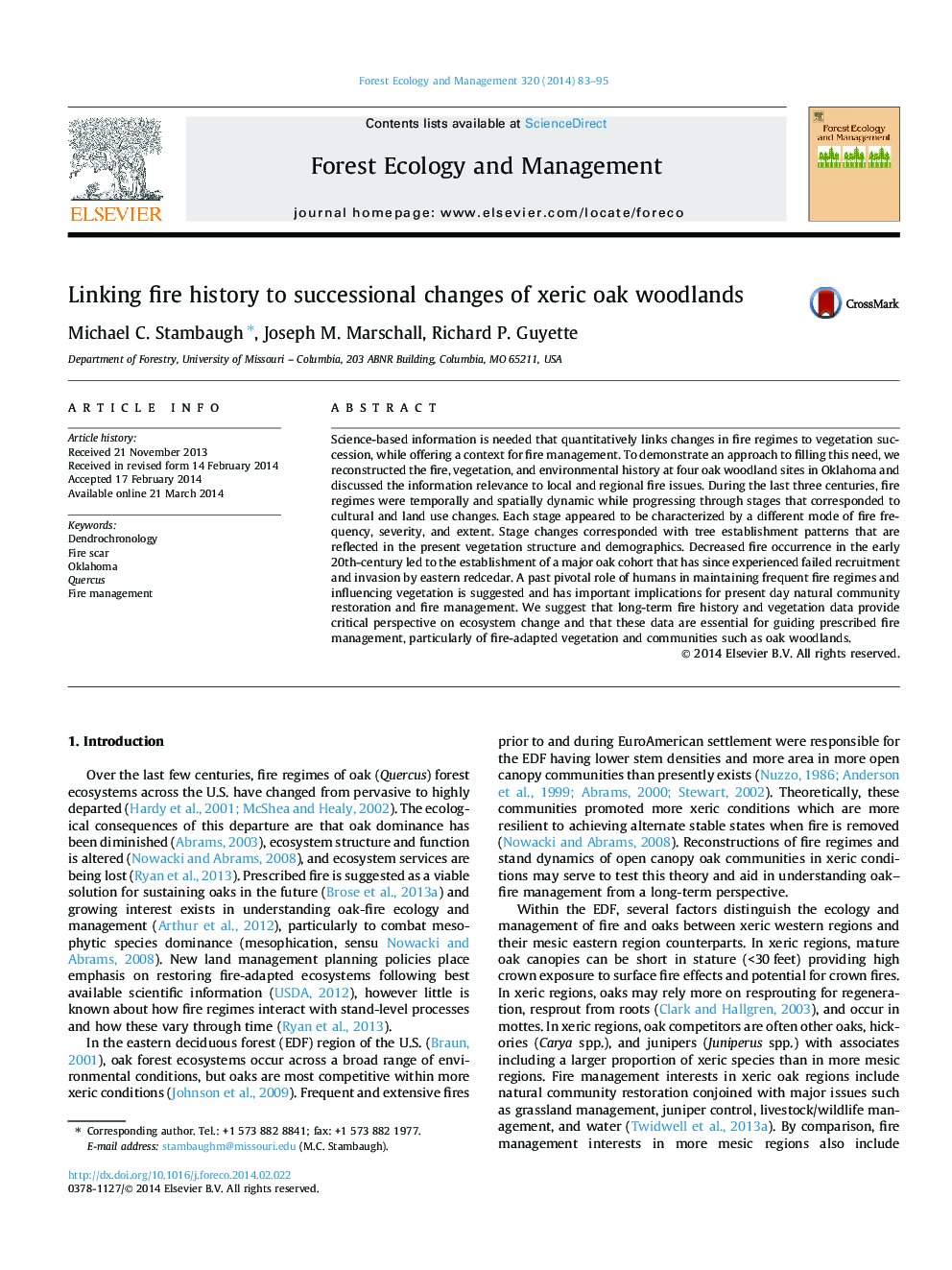| Article ID | Journal | Published Year | Pages | File Type |
|---|---|---|---|---|
| 86560 | Forest Ecology and Management | 2014 | 13 Pages |
•Fire regimes progressed through stages that corresponded to cultures and land use.•Stages had different modes of fire frequency, severity, and extent; not seasonality.•Stage changes corresponded to tree establishment patterns that still persist.•Fire histories describe ecosystem change and are valuable for oak and fire management.
Science-based information is needed that quantitatively links changes in fire regimes to vegetation succession, while offering a context for fire management. To demonstrate an approach to filling this need, we reconstructed the fire, vegetation, and environmental history at four oak woodland sites in Oklahoma and discussed the information relevance to local and regional fire issues. During the last three centuries, fire regimes were temporally and spatially dynamic while progressing through stages that corresponded to cultural and land use changes. Each stage appeared to be characterized by a different mode of fire frequency, severity, and extent. Stage changes corresponded with tree establishment patterns that are reflected in the present vegetation structure and demographics. Decreased fire occurrence in the early 20th-century led to the establishment of a major oak cohort that has since experienced failed recruitment and invasion by eastern redcedar. A past pivotal role of humans in maintaining frequent fire regimes and influencing vegetation is suggested and has important implications for present day natural community restoration and fire management. We suggest that long-term fire history and vegetation data provide critical perspective on ecosystem change and that these data are essential for guiding prescribed fire management, particularly of fire-adapted vegetation and communities such as oak woodlands.
